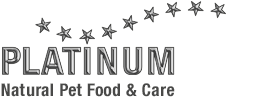
Allergies and intolerances
The awareness of food intolerances among humans increases and so this subject is also getting into the focus of dog owners. The collective term “food intolerance” includes all allergies or intolerances to particular ingredients. The terms are distinguished as follows:
Intolerance to feeding stuff
Medically viewed it is a disorder of metabolism, where the delivered substance only gets processed insufficiently. That means, the process of digestion of the dog after the food intake doesn’t work properly but it doesn’t come to reactions of the immune system.
Allergies to feeding stuff
Contrary to that, an allergy is a reaction of the immune system. Certain substances in the food trigger a reaction of the body like a virus. Allergies can exist by birth or occur spontaneously.
Usually the dog reacts to a specific kind of meat, dairy products, soya, eggs or grain. The lactose intolerance, where the dog isn’t able to process milk and specific dairy product, is well-known. This intolerance appears primarily through diarrhoea.
An allergy to feeding stuff can occur both on a young and a senior dog for the first time. Familiar sensitizers are gluten containing grains like barley, rye and wheat – but also soya.
Healthy dogs digest regular dog food without any difficulty. Contrary to that, dogs with an allergy to feeding stuff react after eating a specific ingredient frequently with: diarrhoea, vomiting, flatulence, a swollen belly, inflammations and irritations of the skin and flaked skin. Hair loss, inflammation of ears and anal gland, offensive smell from the ears, loss of appetite and apathy can be other consequences.
But these are only indications. The symptoms should be discussed with your vet, because they also could be triggered by other diseases.
Besides an allergy to feeding stuff, an allergy to environmental factors (pollen, contact allergen to e.g. the dog harness), an allergy to flea salvia or parasites (fleas, mites), skin mycosis, infections or behavioural issues (e.g. licking the paws because of boredom) also could be possible reasons for itching and mutation of the skin. Even diarrhoea can have different reasons: gastrointestinal infection, stress (due to travel and move, also positive stress), drug administration, deworming, parasite infestation, organ damage et cetera.
Allergies to food are assumed quite often to dogs. However, it is difficult to prove a real allergy reliably. Chasing the cause is only possible by performing a strict elimination diet. Blood tests are offered often, but their informative value is questionable and they don’t capture any intolerance.
An elimination diet gets started with food ingredients the dog has never received before. That means: a new type of meat and source of carbohydrates. Once you decided which food your dog will receive, the diets needs to be fed over a period of at least four to six weeks.
The indispensable foundation of this diet is consistency in keeping up with the strict menu. You and your environment are not allowed adding any other food during it. This contains treats, special snacks (e.g. pig’s ears, bull’s pizzle, beef scalp) and especially add-ons from the table. Everything the dog gets into his mouth during the elimination diet can possibly cause reactions of the skin and the digestive tract – and therefore falsify the result. You can use the selected dog food as a treat (but don’t forget to subtract this from the daily amount of feed). While your walk, watch out that your dog is not serving itself. To play safe, you should always leash your dog. Only when you’re holding on to that very strictly, the diet is able to show the desired results, giving information about the allergies and intolerances to food stuff and a decline of the symptoms. These won’t go back immediately but after two or three weeks and may disappear completely, if the right nutrition for your dog is found. On average, you will need three or four attempts until the goal is reached.
When implementing such a diet, the label of the new dog food needs to be examined carefully. Specifications like “meat and animal-by products (min. 4% …)” doesn’t make obvious which meat types are contained. So it is essential to ask the producer in detail or buy dog food with an open declaration.
If your dog is getting medicine, discuss the ingredients in view of the elimination diet with your vet. The same applies for additional food or supplements if you aren’t able to simply skip them. Medicine and deworming that is provided in chewable pills often contain meat meal or other animal components to increase acceptance.
If you found the right type of dog food and your dog is free from symptoms, it is recommended to execute a so called provocation diet, which shall generate a backlash (a “provocation”). Therefor step by step feed your dog former food ingredients and wait for symptoms arising. A reaction can occur between a few hours and up to several days after the food intake. In this case, go back one step and perform the elimination diet again, until the symptoms are gone.
It is recommended to keep a record over the whole period.














































